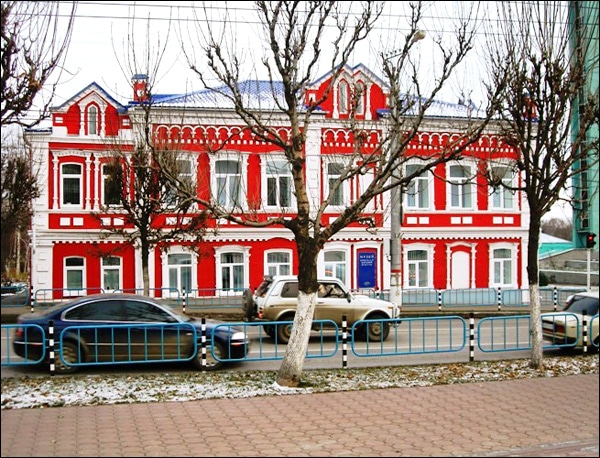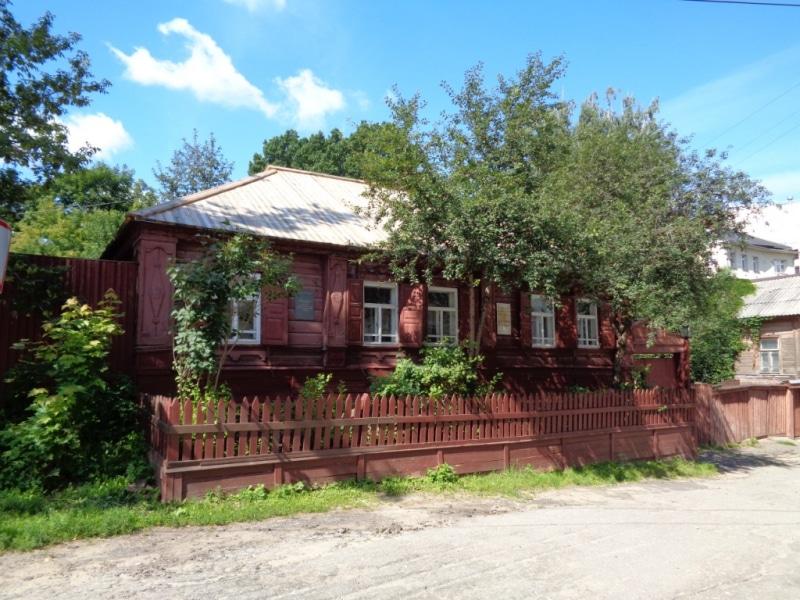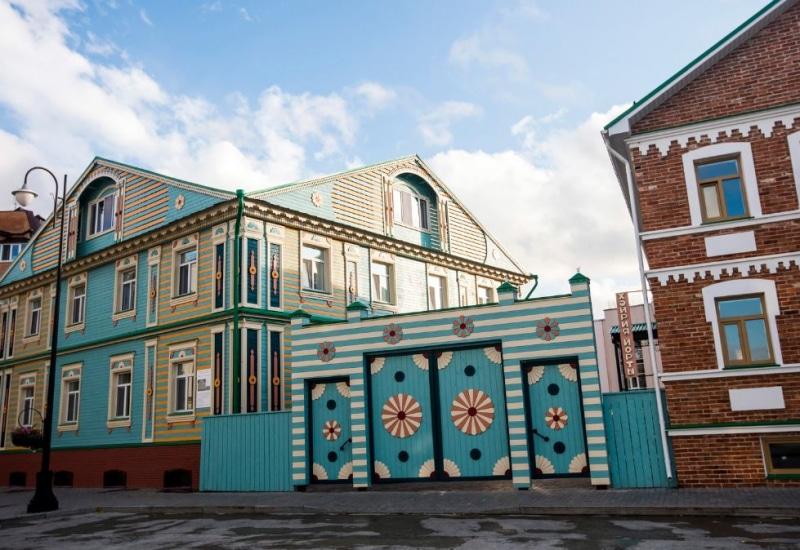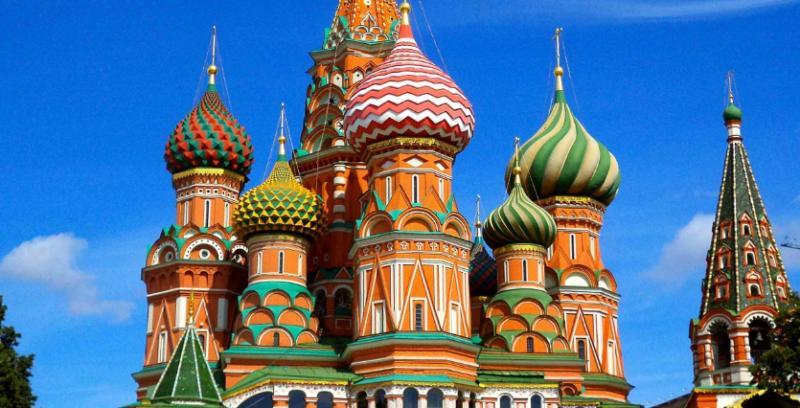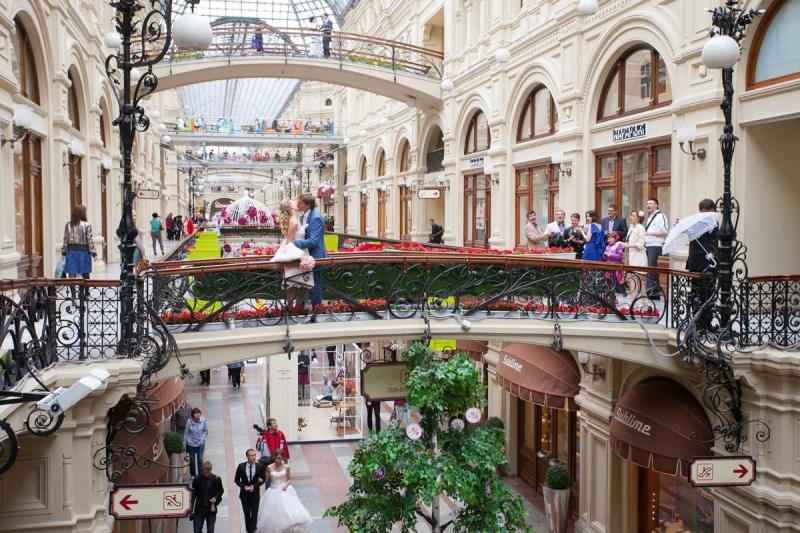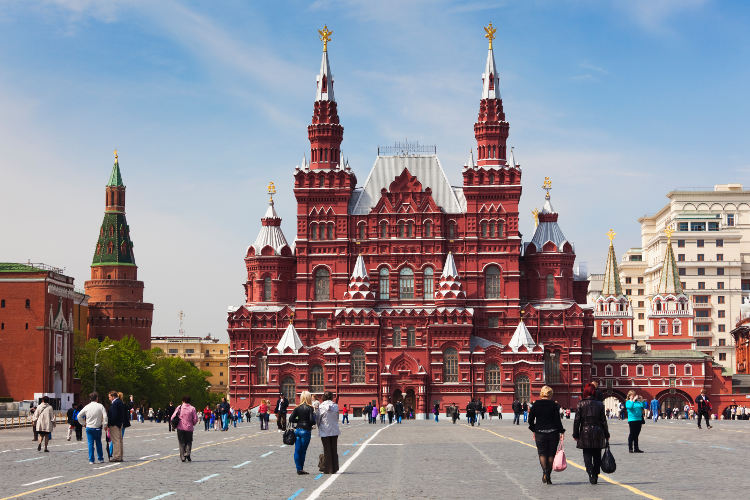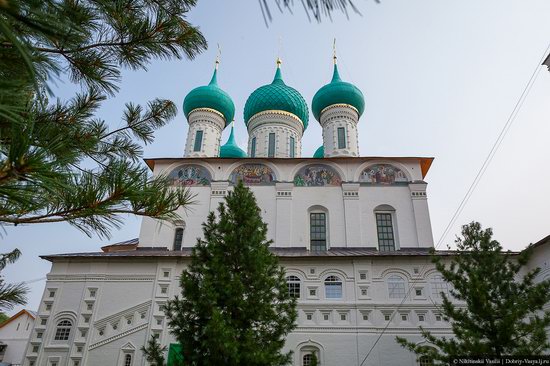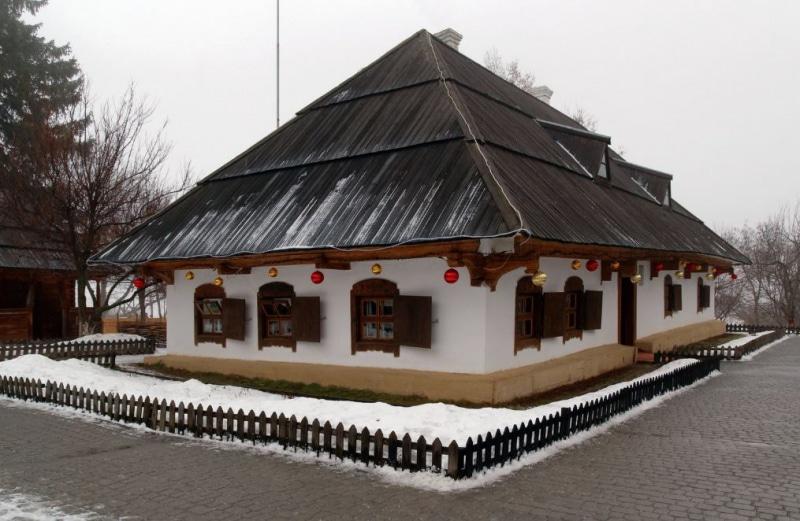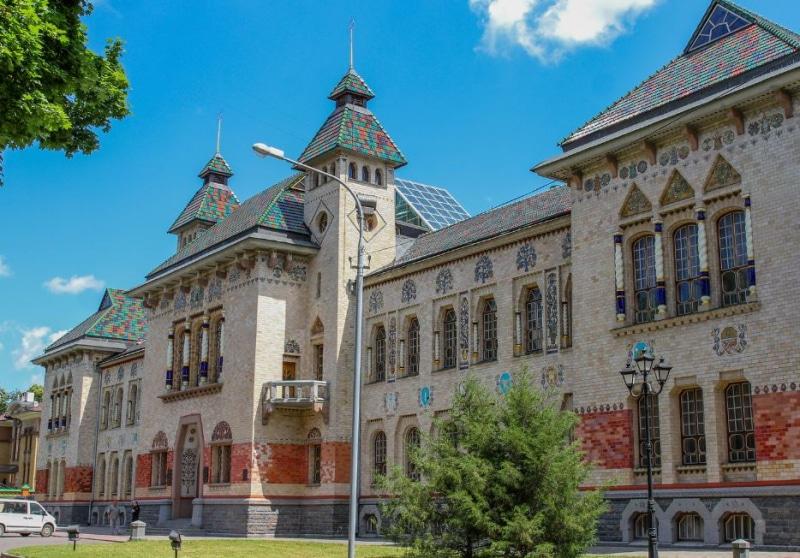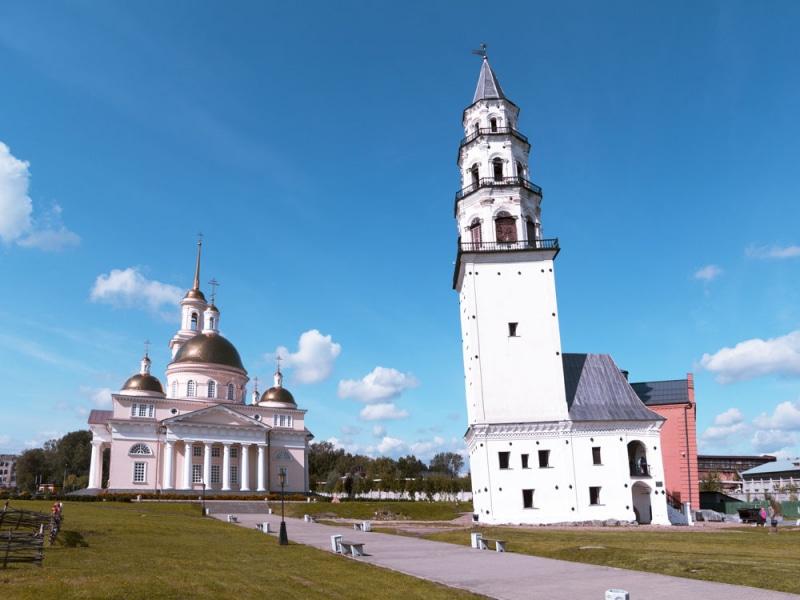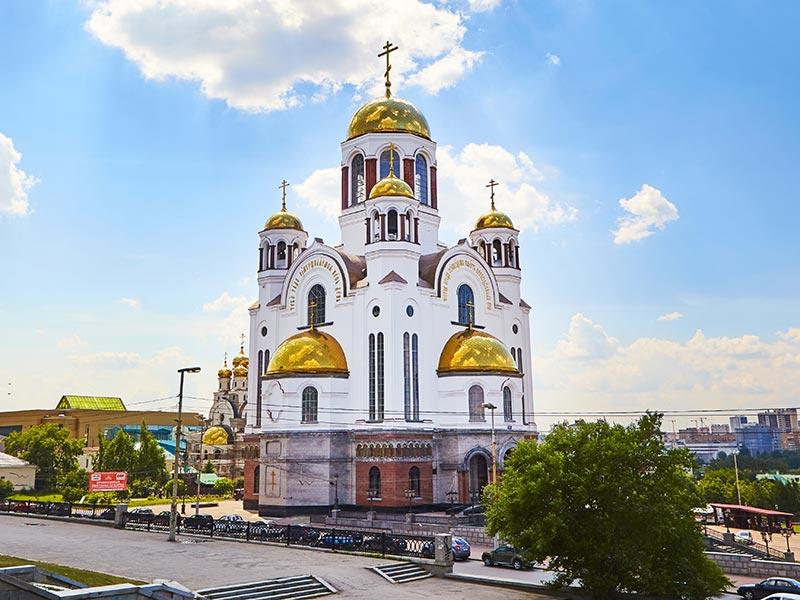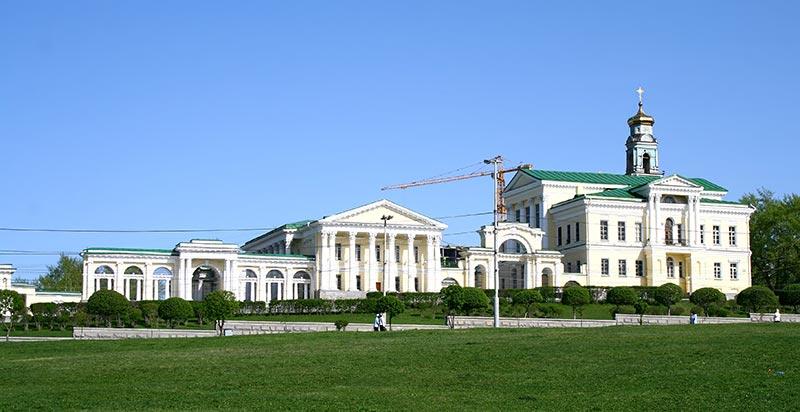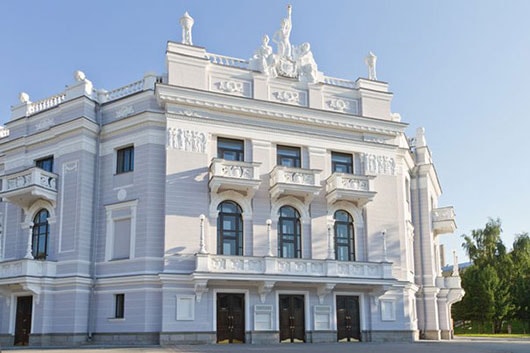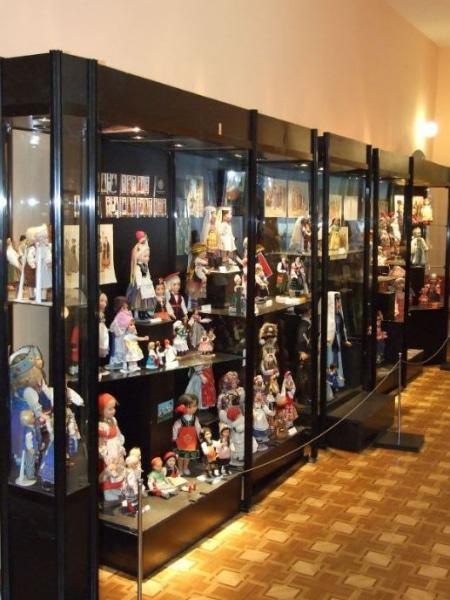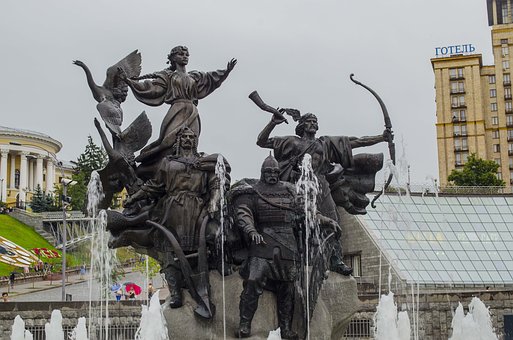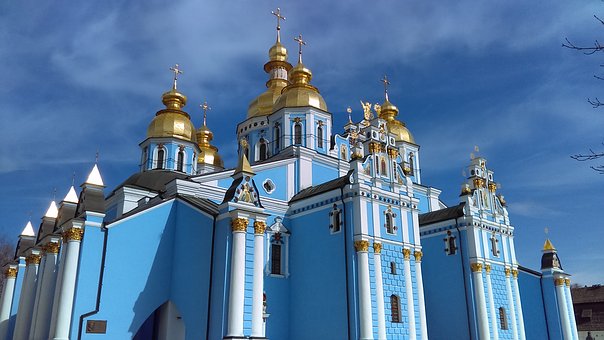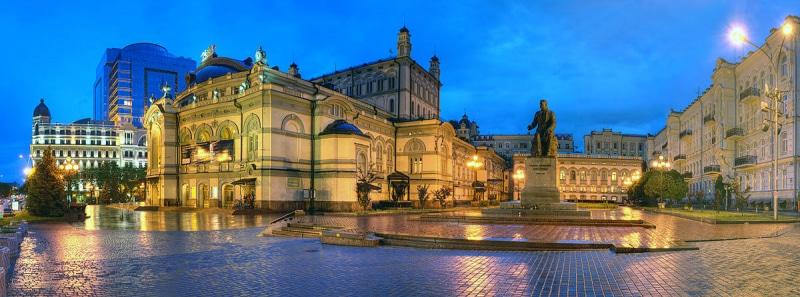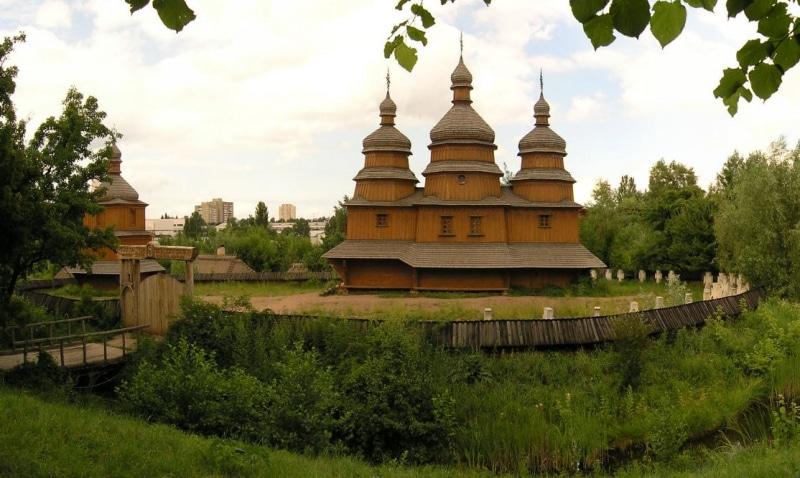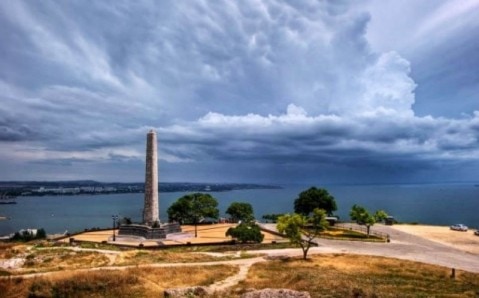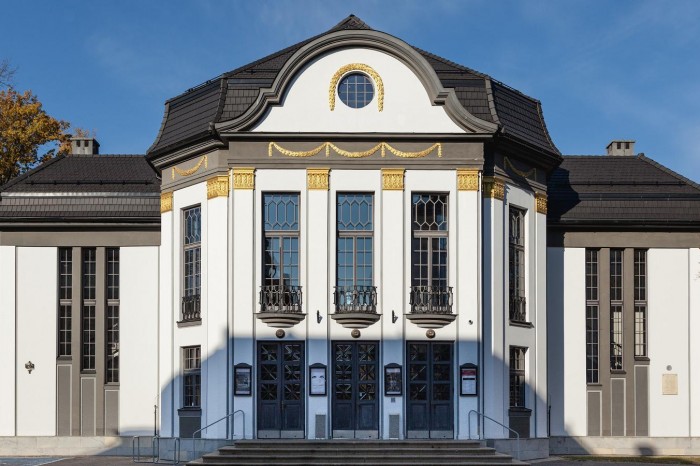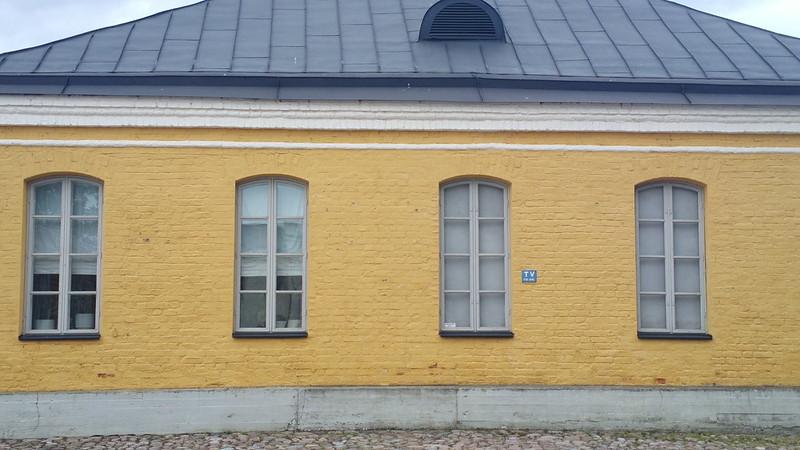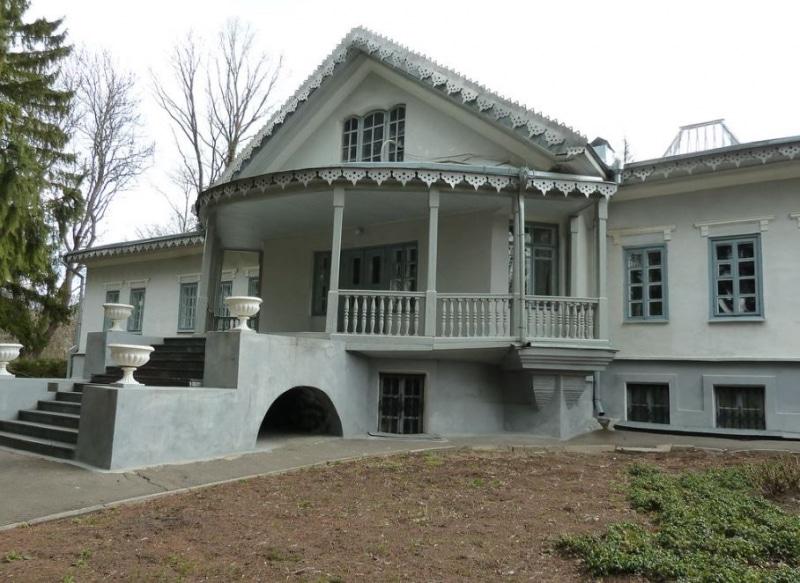ArtandCulture, Saransk
Removed from Unnamed collection
The Museum of Mordovian Culture
One of the well known museum in the city of Saransk is the Museum of Mordovian Culture located at Sovetskaya Street, 19. http://russiatrek.org/saransk-city
Map
Explore more places related to this search:
Removed from Unnamed collection
Kashirin House
Museum of childhood A.M. Gorky's “Kashirin’s House” was opened on January 01, 1938. House of Gorky's grandfather, Nizhny Novgorod tradesman, foreman of the dyeing shop, the vowel of the Nizhny Novgorod Duma V.V. Kashirin, - a monument of history and culture of federal significance, a place associated with the writer's childhood (1871–72); the scene of Gorky's autobiographical story "Childhood", one of the most outstanding works of world literature of the 20th century, a kind of encyclopedia of Russian characters and a national way of life. The house is a 1-storey log cabin, sheathed and unpainted, with 5 rooms: kitchen, grandfather's room, grandmother's room, Mikhail's room, art. son of the Kashirins, and uncle Alyosha Peshkov, underlining - the lower "working" room, where they lived in Aug. 1871 - in the spring of 1872 little Alyosha with his mother after their arrival from Astrakhan. Guided tours: "Alyosha Peshkov in the petty-bourgeois family of the Kashirins", The museum houses a valuable collection of publications of the story "Childhood" in the languages of the peoples of the world (since 1914).
During the Great Patriotic War, from the summer of 1941 to the spring of 1943, the most valuable exhibits of the museum were taken to the Tonshaevsky district of the Gorky (now Nizhny Novgorod) region, where museum staff arranged exhibitions and lectured. The museum continued to work thanks to the museum staff - A.V. Sigorsky and S.P. Zimakov.
In the post-war years, the museum’s household exposition expanded: 1968 — creating an exposition in the basement of the house, 1976 — re-exposure of Uncle Mikhail’s room — re-creating the room’s living environment. By the mid-1970s all dwellings in the house of V.V. are completely restored Kashirin (area - 95.1 sq.m.).
At the heart of the exposition are genuine household items of the 19th century, including a memorial, belonging to the Kashirin-Peshkov family. The unique authentic atmosphere of the house in the natural historical environment, where the old wooden buildings and fragments of the memorial landscape have been preserved, allows us to fully imagine the lifestyle of the Kashirin family, in which the early formation of the future writer Gorky took place in early childhood; gives means. information about the life of Nizhny Novgorod philistinism of the XIX century. http://museumgorkogo.ru/muzej-detstva-a-m-gorkogo-domik-kashirina/
Map
Removed from Unnamed collection
Old Tatar Quarter
The Old Tatar Quarter (“Staro-Tatarskaya Sloboda”) is the soul of the historical part of Kazan. With its streets preserved from the medieval period, this is considered to be the main area of the Tatar city culture. Dozens of monuments have found refuge on the shores of Lake Kaban and Bulak ducts, in the heart of the capital of Tatarstan. The Old Tatar Quarter is spread over an area of 87.95 hectares, and you will find a total of 75 monuments of history and culture of the 18th – 20th centuries throughout it, which form the settlement itself. Among these are the houses of Yunusov-Apanaev, Shamil, Marjani, Kayum Nasyri, Shamil Yusupov and many others. The long list of masterpieces of architecture, however, should not deter you from simply enjoying the atmosphere of this historical place – there is much more to see than simply buildings. In the 19th century, an Oriental Club functioned in this settlement, where famous poets would read their works and some of the very first Tatar plays were staged. Mosques that were built here, are now known around the world - Apanaeva, Blue, Galeev, Burnaevskaya, and Sennaya (Nurulla) Mosques. Other places also decorate the settlement - a literary museum of Tatar poet Gabdulla Tukay, the house-museum of educator and scientist Kayum Nasyri, Tatar Academic Theatre named after Galiasgar Kamal and the “Tatarskaya Usadba” hotel and restaurant complex, which also includes a museum of Tatar life, a gallery of art crafts and a souvenir shop. And, of course some of the more modern places to visit here – for example the Chak-chak Museum (Tatar national delicacy) eagerly await visitors. Here, you can drink a cup of tea with oriental sweets and learn the secrets of ancient recipes of national dishes. https://visit-tatarstan.com/en/places/attractions/staro-tatarskaya_sloboda/
Map
Removed from Unnamed collection
Pedestrian street of Bauman
The city's atmosphere is created by its streets, especially pedestrian streets. In Kazan there is such a street, beautiful, crowded, where every day you can meet musicians, and in the summer even dancers. http://visit-tatarstan.com/locations/sights/places/baumanstreet
Map
Removed from Unnamed collection
Wooden Palace of Tsar Alexei Mikhailovich
The wooden palace of Tsar Alexei Mikhailovich with 270 rooms decorated with paintings and carvings was built in 1667 without using any fasten materials, nails or hooks. It consisted of 26 buildings connected with each other by passages and halls. The whole complex was divided into male and female parts. The male part included ceremonial chambers, chambers of the Tsar and of his sons, while the female part belonged to the Tsarina and to the Tsar’s daughters. https://www.russiaeguide.com/wooden-palace-of-tsar-alexei-mikhailovich.html
Map
Removed from Unnamed collection
Tretyakov Gallery
The Tretyakov Gallery is the main museum of Russian national art, reflecting its unique contribution to world culture. It is a hospitable museum that is known for its rich collection and variety of presented ideas. Check out the best works of Russian art from different eras and authors. On Currently the collection includes more than 180 000 pieces and is regularly updated. The Collection presents major masterpieces from the permanent exhibition.
Also visit The New Tretyakov Gallery which presents the most completed in our country permanent exhibition of the art of the 20th century in all its diversity - avant - garde, socialistic realism and art of the "austere style" and "underground" and some new art trends. Here are held not only large-scale retrospectives of great Russian artists, but also showed experimental exhibitions of young authors. A lecture - hall and a creative workshop offer a wide range of theoretical knowledge and practical trainings about the art of the 20th and early 21st century for children, students and adults. https://www.tretyakovgallery.ru/en/
Map
Removed from Unnamed collection
St. Basil s Cathedral
St. Basil’s Cathedral is Moscow’s most famous artistic work of architecture. Also called "Pokrovsky Cathedral" or "The Cathedral of Intercession of the Virgin by the Moat", it is the most recognizable Russian building. This Cathedral is to the Russians what the Eiffel Tower is to the French, an honorable symbol of their past, present, and future.
The cathedral stands on the Red Square, facing the Ivory Gate Chapel. The St. Basil's Cathedral history started in 1555 by the order of Ivan IV ("Ivan the Terrible") in celebration of the defeat of Kazan, the last remaining grip of the Mongol Empire on European lands.
Today there are more than 400 icons painted between the 14th and 19th centuries by the most famous schools of Novgorod and Moscow hanging on the walls.
A narrow pathway leads you from one alter to another, passing through a wooden spiral staircase so well hidden in a wall, that it was only found during the 1970 restoration of the cathedral. Taking in the medieval aura and mystical spirituality of St. Basil’s imbues visitors with what can only be described as a quintessential Russian experience. https://www.travelallrussia.com/st-basil-moscow
Map
Removed from Unnamed collection
GUM
Today GUM lives like it once was conceived. It is ideal shopping city of Moscow that seems to live without losses and catastrophes for 120 years already. The fountain in the center of GUM was reopened and pleases visitors since 2007. This legendary construction is captured in the official chronicles of the twentieth century and in millions of private shots. They say, the sound of a shutter can be heard every three seconds here today. The legendary cinema, which went down in the history of the national movie-making, was restored. Unique illumination project was carried out on the facade. GUM-Skating rink was opened at Red Square in 2006, which at once gained the fame of the brightest ice rink of the capital.
GUM is not just a store where you can buy almost everything. It is a shopping block where there is a pharmacy, bank branch, and flower shop ... It is a monument of architecture. It is a comfortable lounge area with restaurants and cafes. It is an art gallery and venue for cultural events. It is an integral part of Russian history. It is a symbol of Moscow and it is the closest place to the Kremlin, where you can feel yourself in Europe! https://gumrussia.com/
Map
Removed from Unnamed collection
Red Square
Being the most recognizable symbol of Russia in the world, the glorious Red Square is the UNESCO listed World Heritage which accepts thousands of tourists each year. No wonder that this sight is a true must-visit of any Moscow trip and every adventurous globe-trotter has a picture in front of St. Basil's Cathedral.
The Red Square is set in the very heart of Moscow, separating the Kitay Gorod commercial district from the Kremlin walls, and has a history as old as the post-Mongol fortress itself. The name "Krásnaya Plóshchaď" translates from Russian as "red", yet the word also means "beautiful". This ancient center of Russia's political power dates back to the end of the 13th century and has a long and rich history.
Originally, it was the site of a central market square established in an area cleared by decree for the defense of Kremlin on the banks of Moskva and Neglinnaya rivers. It was also a place where various festive processions were held and thus the square was considered a sacred place. https://www.travelallrussia.com/red-square
Map
Removed from Unnamed collection
Armoury Chamber
The Armoury Chamber, a treasure-house, is a part of the Grand Kremlin Palace's complex. It is situated in the building constructed in 1851 by architect Konstantin Ton. The museum collections were based on the precious items that had been preserved for centuries in the tsars' treasury and the Patriarch's vestry. Some of the exhibits were made in the Kremlin's workshops, others were accepted as ambassadorial gifts. The museum was named after one of the oldest Kremlin's treasury stores.
The Armoury Chamber preserves ancient state regalia, ceremonial royal clothes and coronation dresses, vestments of Russian Orthodox Church hierarchs, the most extensive collection of gold- and silverware made by Russian craftsmen, West European artistic silver, ceremonial arms and armour, carriages and horse ceremonial harness.
The State Armoury presents more than four thousand items of applied art of Russia, European and Eastern countries of the 4th - early 20th century. The highest artistic level and particular historical and cultural value of the exhibits have made the State Armoury of the Moscow Kremlin a world-wide known museum. http://armoury-chamber.kreml.ru/en-Us/history/view/
Map
Removed from Unnamed collection
Bolshoi Theatre
The Bolshoi Theatre began its life as the private theatre of the Moscow proseсutor Prince Pyotr Urusov. On 28 March 1776, Empress Catherine II signed and granted the Prince the 'privilege' of organizing theatre performances, masquerades, balls and other forms of entertainment for a period of ten years. It is from this date that Moscow's Bolshoi Theatre traces its history.
The Bolshoi building, which for many years now has been regarded as one of Moscow’s main sights, was opened on 20 October 1856, on Tsar Alexander II’s coronation day.
On 29 October 2002 the Bolshoi was given a New Stage and it was here it presented its performances during the years the Historic Stage was undergoing massive reconstruction and refurbishment.
The reconstruction project lasted from l July 2005 to 28 October 2011. As a result of this reconstruction, many lost features of the historic building were reinstated and, at the same time, it has joined the ranks of most technically equipped theatre buildings in the world.
The Bolshoi Theatre is a symbol of Russia for all time. It was awarded this honor due to the major contribution it made to the history of the Russian performing arts. This history is on-going and today Bolshoi Theatre artists continue to contribute to it many bright pages. http://www.bolshoi.ru/en/about/hist/history/
Map
Removed from Unnamed collection
Vvedenskiy Tolga Convent
Vvedenskiy Tolga Convent is located on the outskirts of Yaroslavl, on the left bank of the Volga River. You can easily get here by water-bus from the city center. http://russiatrek.org/blog/travel/beautiful-vvedenskiy-tolga-convent-in-yaroslavl/
Map
Removed from Unnamed collection
Museum-Mansion of Ivan Kotliarevsky
A lot of sights in Poltava are connected with the name of the classical Ukrainian writer and dramatist Ivan Kotliarevsky who lived the greater part of his life and created his most famous works here - among them the prominent poem 'Aeneid'. His Museum-Mansion at the town's historical center near the Assumption Cathedral is one of Poltava's most picturesque and most visited sights.
The real mansion, where the prominent writer lived and worked didn't survive. In 1969, however - to Kotliarevsky's 200th anniversary - it was reconstructed upon watercolour sketches by another Ukrainian classical writer - Taras Shevchenko. The memorial complex, fenced with flower-twined paling, consists of a dwelling house - the typical Ukrainian hut from the 18h century - warehouse and well with a sweep.
Fragments and details of Ivan Kotliarevsky's old house were embedded in the recreated mansion. Thanks to the recollections of writer's contemporaries, the Museum-Mansion's interior was renewed as accurate as possible. Kotliarevsky's personal belongings, awards, manuscripts and everyday knickknacks from the 18th - early 19th centuries are kept here. https://discover-ukraine.info/places/eastern-ukraine/poltava/622
Map
Removed from Unnamed collection
Poltava Local History Museum
Poltava Local History Museum is one of the oldest and the most interesting museums in Ukraine. It houses a unique collection of authentic items and antiquities that introduce the history, nature and culture of Poltava region, as well as true treasures of the world history, including artefacts from Ancient Egypt, India, China and Japan. The museum is reckoned among the most visited ones in the city: yearly, about half a million Poltava locals and guests visit its original expositions.
The Local History Museum is situated in the building of the former province Zemstvo (elective district council in pre-revolutionary Russia) that was built in Ukrainian art nouveau style, in the early 20th century. Being recognized as an eminent architectural masterpiece, it is often called a stone flower, in which traditions of folk architecture, old Ukrainian ornaments and innovative designer forms interweave. https://discover-ukraine.info/places/eastern-ukraine/poltava/1390
Map
Removed from Unnamed collection
Leaning Tower of Nevyansk
The leaning tower, constructed with the sponsorship of the Demidov dynasty, is the symbol of Nevyansk and a monument of industrial architecture.The tower has several levels and floors. Earlier it hosted a lab for examining the content of manufactured iron, the factory's archives, the chancellor's office, and the lockup cell. Today it contains museum exhibits. Akinfiy Demidov's office, which served as a prison in Soviet times, was located on the second floor.To this day there is still a so-called «listening room». If you stand in one corner of the room, you can hear the tiniest whisper of people in the opposite corner. In addition, the Nevyansk tower has preserved its 18th-century clock tower. This chiming clock was manufactured in the 1730s by an English clockmaker, Richard Phelps, and had needed repairs only three times since. There was a time when the clock could play up to 20 musical pieces. Today, every 15 minutes the clock chimes the melody «Glory to You» from the opera «A Life for the Tsar».Another feature of the tower is the metal steeple with a weathercock, bearing the stamped coat-of-arms of the Demidovs. The steeple is grounded. It served as a lightning rod a quarter of a century before Benjamin Franklin invented the first lightning rod in 1725. https://eng.russia.travel/objects/306693/
Map
Removed from Unnamed collection
Church on the Blood
The memorial church was consecrated in 2003 at the site of execution of the last Russian emperor Nicholas II and his family. One of the largest churches in Ekaterinburg and pilgrimage destination for people from all over Russia, it was built in 2000-2003 at the site of execution of the last Russian emperor Nicholas II and his family, which took place on the night of July 16-17, 1918. This is the third church-on-the-blood in Russia after the ones in Uglich (built on the spot of tsarevich Dmitry’s murder in 1591) and St. Petersburg (built on the spot where Emperor Alexander II was assassinated in 1881). http://its.ekburg.ru/en/sights/hram-na-krovi-vo-imya-vseh-svyatyh-v-zemle-rossiyskoy-prosiyavshih/
Map
Removed from Unnamed collection
Rastorguyev-Kharitonov Mansion
One of the most significant 18-19th century architectural monuments in Ekaterinburg, the largest and oldest mansion ensemble of the city. Rastorguyev-Kharitonov’s mansion ensemble is a true architectural gem of Ekaterinburg. The estate occupying the entire northern slope of Voznesenskaya Gorka (Ascension Hill) includes the main house, wings, fences and gates, stables, and a large park http://its.ekburg.ru/en/sights/usadba-rastorgueva-haritonova/
Map
Removed from Unnamed collection
Opera and Ballet Theatre
The city opera hall was designed by V. Semenov and opened on September 12, 1912 with M. Glinka’s opera “A Life for the Tsar”. Ekaterinburg Opera and Ballet Theatre is one of the oldest in Russia. The theatre construction (based on the design by V. N. Semenov from Saint Petersburg who won the all-Russian open contest) began in 1903 and was led by local architect K. T. Babykin. The grand opening was held on September 12, 1912 – Glinka’s opera “A Life for the Tsar” was staged. Riccardo Drigo’s "The Magic Flute" became the first ballet production of a new theater in 1914 https://uralopera.com/
Map
Removed from Unnamed collection
Museum of Toys
The Kyiv Toy Museum is a truly unique place, interesting for both, children and adults. For the first ones it is an opportunity to plunge into the fairy world, where hundreds of different heroes live, for the latter ones - a chance to feel nagging nostalgia, and at the same time to learn many interesting facts about the history of toys as an integral part of the country's culture.
The Toy Museum, opened in 2005, is one of the youngest in the capital. Nevertheless, its impressive collection numbering over 10 thousand exhibits exists over 80 years! It is based on the items that were gathered for the toy exhibition, which took place back in 1936. Today, the museum's exposition visually demonstrates the history of national toy production and is the vivid evidence that Ukraine rightly occupied the second place among the Soviet republics in volumes and quality of manufactured children toys.
Museum shelves are 'inhabited' by hundreds of different dolls and teddy animals, technical and construction toys, as well as a unique collection of board, printed games. Besides commercial items, museum funds include exclusive author's works by soviet puppet-makers and authentic collection of Ukrainian folk toys. https://discover-ukraine.info/places/kyiv/kyiv/955
Map
Removed from Unnamed collection
Khreshchatik street
The modern center with surviving parts of the old city are on the hilly west, or right bank, of the Dnipro River. The main street, Khreshchatik, runs between two steep hills. Parallel about half a kilometer west, is vulytsya Volodymyrska, the main street of the Old Kyiv area (Staryj Kyiv). http://www.traveltoukraine.org/kyiv.htm
Map
Removed from Unnamed collection
Cathedral of St. Sophia
The Cathedral of St. Sophia, where the princes of Kyiv were crowned in the years of Kyiv's grandeur, has outstanding mosaics and frescoes dating back to the 11th century. Overlooking the old section of Kyiv, Podol, stands the Ukrainian Baroque church of St. Andrew, much beloved by Ukrainians. http://www.traveltoukraine.org/kyiv.htm
Map
Removed from Unnamed collection
National Opera & Ballet Theater of Ukraine
The history of the National Opera of Ukraine was initiated in 1867, when in Kiev, one of the major administrative centers of the then Russian Empire, after a long petition the government opened a permanent opera troupe. There was a first outside the capitals - Petersburg and Moscow - a musical theater. https://www.opera.com.ua/about/istoriya-teatru
Map
Removed from Unnamed collection
Mamajeva Sloboda
The outdoor museum of architecture and life Mamajeva Sloboda is situated not far from the city center, near one of the capital’s picturesque parks. It is an authentic cultural complex that reproduces Cossack settlement of 17th – 18th century. Not only original architectural buildings of Cossack age, but also inimitable atmosphere and spirit of that time were recreated there.
The culture and entertainment complex Mamajeva Sloboda is situated in the historical place – at the source of the Lybid River. These lands once belonged to the St. Michael's Golden-Domed Cathedral and was occupied by monastery apiary with farm and pond. Later, gardens were planted and a park was laid out in this area, but the ethnic saksen with neat Ukrainian huts under golden straw roofs didn’t appear there until 2009.
The museum got its name in honour of the legendary Cossack Mamai – one of the Ukrainian Cossack folklore’s most popular characters, whose image could be found next to the icons in almost every house at Cossack times. https://discover-ukraine.info/places/kyiv/kyiv/1540
Map
Removed from Unnamed collection
Park Kyivan Rus'
Spread out in Kyiv’s picturesque surroundings, the Culture and History Center ‘Park Kyivan Rus’ is a unique project in its nature and scale that has no analogues in Ukraine and even in Europe. It recreates architectural appearance and atmosphere of princely Kyiv with amazing accuracy, taking visitors on a time travel to the Middle Ages and bringing them in the very heart of one of the most influential states in Eastern Europe – the Old Rus.
It was decided to create the park exactly in this place for the reason that it is a historically important territory not far from the capital. It is mentioned in antique chronicles and its landscape is very close to the relief and vegetation of the Old Kyiv. The creators of the Culture and History Center brilliantly recreate the ensemble of the Kyiv stronghold – the historical core of the ancient city – as it looked under the rule of the Prince Vladimir the Great. It is from Kyiv kremlin (another name for the medieval stronghold) that the origin and development of Kyiv and the Old Rus started. Later it became the cradle of Slavic civilization. https://discover-ukraine.info/places/kyiv/kyiv/1527
Map
Removed from Unnamed collection
Peterhof
One of St. Petersburg's most famous and popular visitor attractions, the palace and park at Peterhof (also known as Petrodvorets) are often referred to as "the Russian Versailles", although many visitors conclude that the comparison does a disservice to the grandeur and scope of this majestic estate.
Versailles was, however, the inspiration for Peter the Great's desire to build an imperial palace in the suburbs of his new city and, after an aborted attempt at Strelna, Peterhof - which means "Peter's Court" in German - became the site for the Tsar's Monplaisir Palace, and then of the original Grand Palace. The estate was equally popular with Peter's daughter, Empress Elizabeth, who ordered the expansion of the Grand Palace and greatly extended the park and the famous system of fountains, including the truly spectacular Grand Cascade.
Improvements to the park continued throughout the 18th and 19th centuries. Catherine the Great, after leaving her own mark on the park, moved the court to Pushkin, but Peterhof once again became the official Imperial Residence in the reign of Nicholas I, who ordered the building of the modest Cottage Palace in 1826.
Like almost all St. Petersburg's suburban estates, Peterhof was ravaged by German troops during the Second World War. It was, however, one of the first to be resurrected and, thanks to the work of military engineers as well as over 1,000 volunteers, the Lower Park opened to the public in 1945 and the facades of the Grand Palace were restored in 1952. The name was also de-Germanicized in 1944, becoming Petrodvorets, the name under which the surrounding town is still known. The palace and park are once again known as Peterhof. http://www.saint-petersburg.com/peterhof/
Map
Removed from Unnamed collection
Mount Mithridat
Mount Mithridat towers above the town for almost one hundred meters and is rightly considered to be Kerch’s main tourist attraction and its imperishable symbol. Different historical and cultural epochs interweaved in this wonderful place and left their landmarks in form of unique monuments on the mountain's slopes and at its foot. https://discover-ukraine.info/places/crimea/kerch/594
Map
Removed from Unnamed collection
Narva Museum
Narva Museum today – it is the Narva stronghold, the Northern Courtyard, and the Art Gallery. These are more than architectural monuments, as the castle and the gallery also have exhibition halls.
The exhibition of Narva castle talks about the history of Narva from the 13th century until the beginning of the 20th century. In 1991, the Art Gallery was opened. This allowed the museum to host Estonian and foreign art exhibitions in addition to displaying its own art collection.
In 2007, Põhjaõu was opened as a new tourist attraction in the Northern Courtyard of the castle; this is how Narva Museum interprets the district of artisans dating from the 17th century. https://www.visitestonia.com/en/narva-museum-1
Map
Removed from Unnamed collection
Small House of the Tartu Vanemuine Theatre
The art nouveau Small House of the Vanemuine Theatre was built from 1914 to 1918 (architect A Eichhorn). The decision to build a new, modern theatre building was made after the building of the summer theatre of the German Society of Artisans that used to be located in this spot perished in a fire. http://www.visittartu.com/en/small-house-of-the-tartu-vanemuine-theatre-former-german-theatre/
Map
Removed from Unnamed collection
The Johanna Oras Manor Gallery
Johanna and Reijo Oras purchased the Tuunaankartano Manor, situated in the heart of the Retretti area in Punkaharju. The manor-house, built in the 1910s, is the permanent location for Johanna Oras´s summer exhibition. A side building will be renovated into the artist´s summer atelier, offering something exceptional in Finland; the public will have the chance to follow the artist at work and see some of the mysterious birth processes of a work of art from inspiration to the final brush touch. https://visitsavonlinna.fi/en/products/the-johanna-oras-manor-gallery/
Map
Removed from Unnamed collection
Hyterma
Hytermä islands are nature reserve area and museum islands, about 7km from the centre of Kerimäki towards Hälvä. Hytermä was declared a protected nature area in the year 1931, and the fact that is has survived almost completely in its natural state is all down to an ex-rural police chief (1916-1940) Heikki Väyrynen, a.k.a. Romu-Heikki, and his wife.
The islands have a one-of-a-kind collection of art made from rocks and easily walked nature paths. Hytermä can only be reached by boat which you can rent before rowing the 400m to the island. Once there you will also find a wonderful sandy beach and a pier.
Hytermä is situated 7 km from the centre of Kerimäki (Savonlinna-Kerimäki 23 km), address: Hälvänsaarentie 80, Kerimäki. https://visitsavonlinna.fi/en/hyterma/
Map
Removed from Unnamed collection
Wolkoff House Museum
Built in 1826, Wolkoff House is located in the centre of the town and is one of the oldest wooden buildings in Lappeenranta. It originally belonged to a Russian merchant family, from 1872 to 1986, and was opened as a museum to the public in 1993. https://www.discoveringfinland.com/destination/wolkoff-house-museum/
Map
Removed from Unnamed collection
South Karelia Art Museum
Founded in 1965, the Lappeenranta Art Museum initially occupied the same premises as the South Karelia Museum of Cultural History, at the northern tip of the Lappeenranta Fortress. In the 1980s, the Art Museum moved to its present site in the neoclassic-style barracks (built in 1798), opposite the Orthodox Church. In 1986, the Art Museum became the Regional Art Museum of South-East Finland.
The museum is home to a collection of Finnish art from the mid-19th century to the present day. The museum’s largest single collection of old Finnish art was accumulated by Viipurin Taiteenystävät ry (Vyborg Friends of Art); this collection includes works by many well-known artists such as Albert Edelfelt, Pekka Halonen, Tyko Sallinen, Hjalmar Munsterhjelm and Eero Järnefelt. The collection has paintings by artists who were active in Vyborg or were born there. The contemporary art collections, on the other hand, focus in particular on art from south-east Finland and include paintings by Leena Luostarinen, Unto Ahjotuli, Anne Tompuri, Irmeli Tarmo, Eeva Vesterinen, Heimo Suntio and Sinikka Kurkinen etc. etc.
Every year, the Art Museum also stages between three and four temporary exhibitions which feature both the latest trends in the world of art and works representing earlier periods in the history of art. http://www.discoveringfinland.com/destination/south-karelia-art-museum/
Map
Removed from Unnamed collection
National Pirogov's Estate Museum
The National Nikolai Pirogov Estate Museum, situated in the picturesque park in the outskirts of Vinnytsia, is not just the most interesting town sight, but an important object of the cultural heritage of Ukraine.
Nikolai Pirogov is a prominent scientist, talented physician, inventor of anaesthesia and field martial surgery, founder of the Red Cross Society and notable public figure. It's hard to overvalue his contribution to the development of medicine, and in particular - of surgery. In 1847 Pirogov invented ether narcosis and applied it for the first time during the war on the Caucasus. Later the prominent surgeon conducted hundreds of successful operations on the battlefield with its help. One more invention of Pirogov, without which it's impossible to imagine modern medicine, is gypsum bandage to fixate fractures. The doctor widely applied it during the Crimean War: back then it allowed reducing the number of amputations among injured in dozens of times. Very few people know that the white disinfected doctor's robe is also Pirogov's invention, for which, by the way, he was considered to be a madman and was even put in the psychiatric clinic for several days. Moreover, the scientist introduced a number of new medical techniques and methods of surgical operations.
The structure of the museum is unique. The house, where Nikolai Pirogov lived, is in the center of the museum's complex: vast exposition, which has 12 sections telling about certain periods of his life and work, is located here. Special attention is paid to the scientist's genius inventions that helped to save thousands of human lives. In the manor you may see the study, where Nikolai Pirogov worked, his personal things, books, surgical instruments, pictures. https://discover-ukraine.info/places/central-ukraine/vinnytsia/340
Map
Removed from Unnamed collection
Pilies Street
Pilies Street is the oldest and most flamboyant street in the Old Town of Vilnius. The street appeared in place of the former road from Vilnius Castle to the south, towards Poland and Russia. This was the main road to the castle, with its branches finally turning into side streets. The name of Pilies Street was mentioned in historical annals as early as 1530. http://vilnius-tourism.lt/en/what-to-see/top-20/pilies-street/
Map

